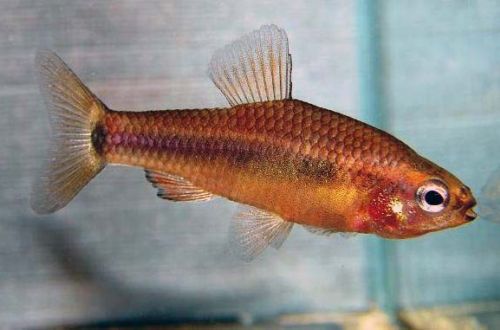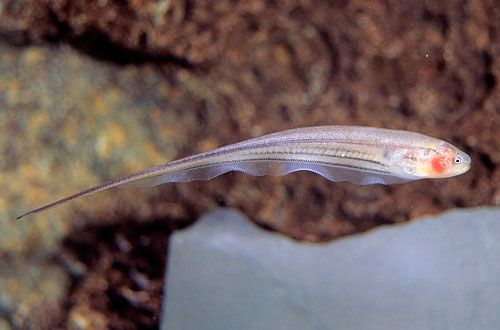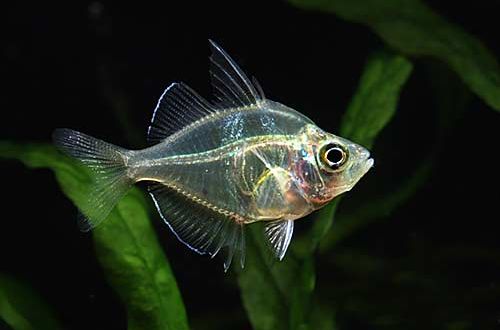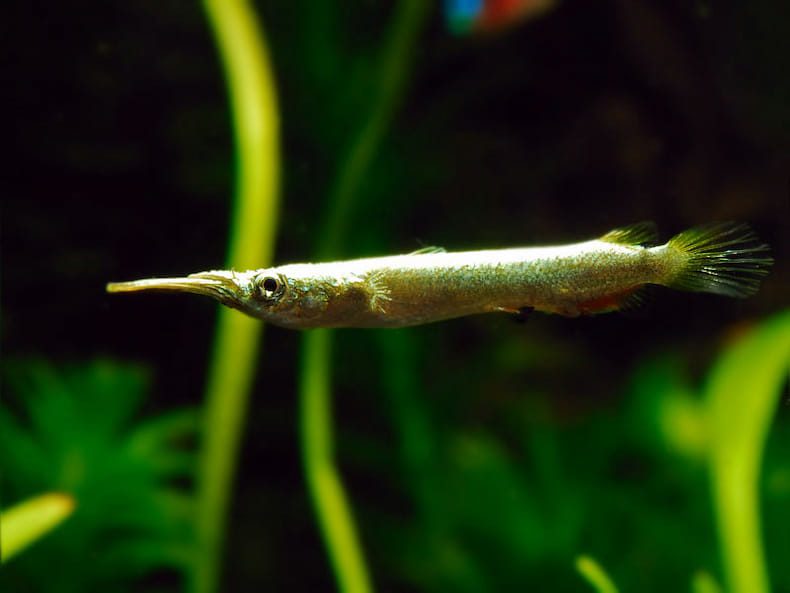
Dermogenis
Dermogenis or Malaysian half-snout, scientific name Dermogenys pusilla, belongs to the Hemirampidae family. A peculiar fish with an unusual appearance. It does not have a bright color, but nevertheless has its fans among aquarists.
Contents
Habitat
Widely distributed throughout Southeast Asia on the territory of modern Thailand, Sumatra, Java, Singapore, Malaysia. Inhabits water bodies with a slow current, such as backwaters of rivers, swamps, lakes with rich aquatic vegetation. Found in brackish coastal waters among mangroves.
Brief information:
- The volume of the aquarium – from 50 liters.
- Temperature – 24-28°C
- Value pH — 7.0–8.0
- Water hardness – medium to high hardness (10–20 dGH)
- Substrate type – any
- Lighting – moderate
- Brackish water – acceptable, concentration of 5 grams of salt per 1 liter of water
- Water movement – moderate
- The size of the fish is 6–7 cm.
- Food – any food
- Temperament – conditionally peaceful
- Keeping in a group of 3-4 individuals
Description

It has an elongated streamlined body, the dorsal and anal fins are located far back closer to the tail. Beak-shaped unequally elongated jaw, with the upper one shortened, and the lower one pushed far forward. Such a structure is designed to capture food from the surface of the water. The color is gray-brown, the fins have a red tint.
Food
In nature, it feeds on small insects, their larvae and other invertebrates, which it catches near the surface of the water. In a home aquarium, it is desirable to serve frozen or live food (flies, mosquito larvae, bloodworms, etc.), dry food rich in protein. Does not take food in the water column and at the bottom, so the food must be floating.
Maintenance and care, arrangement of the aquarium
The creation of any special conditions of detention is not required. When designing, it is important to provide open areas for swimming, combined with places for hiding. As the latter, clusters of floating plants are used. Overgrowth of the entire surface should not be allowed, this will create difficulties for the fish to feed. The design of the middle and lower tiers of the aquarium does not matter.
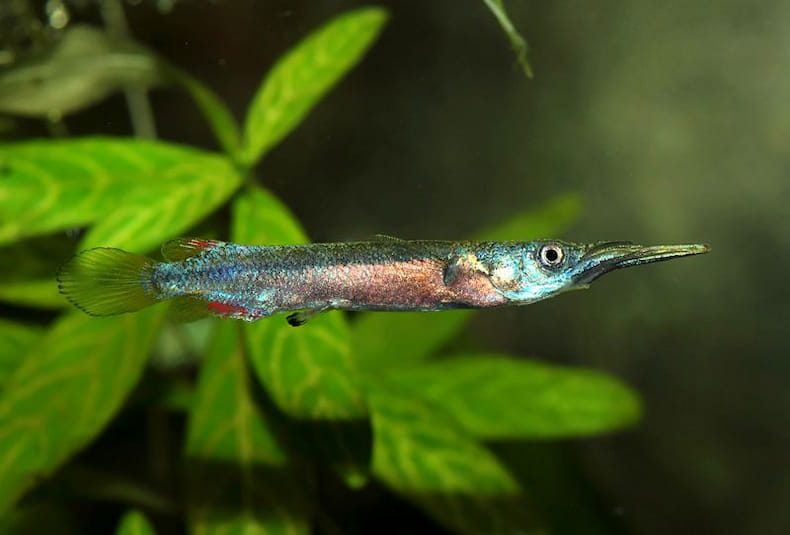
The ecological balance is maintained by a weekly renewal of a part of the water (10–20%) with fresh water while cleaning the soil with a siphon from organic residues (excrement, uneaten food residues, plant residues), as well as with the help of an efficient filtration system.
Behavior and Compatibility
There is intraspecific competition between males. Keeping two or more males in a small aquarium is unacceptable. In relation to other species, it is peaceful. Compatible with most freshwater fish of similar or smaller size.
Breeding / breeding
The females do not lay eggs. The entire incubation period, the fry develop in the body of the fish and are born already fully formed. A similar feature has evolved evolutionarily as an effective protection for future offspring.
Breeding is simple and does not require special conditions. Often, the aquarist learns about the past spawning after the fact, when the fry are already swimming in the aquarium. It is allowed to keep with their parents, but for protection they will need reliable shelter in the form of dense thickets of plants, for example, Richia. Feed small fruit flies, specialized food.
Fish diseases
In favorable conditions, cases of the disease are rare. The risks are increased in a poorly maintained tank with poor water, malnutrition, wrong food, contact with other sick fish. Read more about symptoms and treatments in the Aquarium Fish Diseases section.



